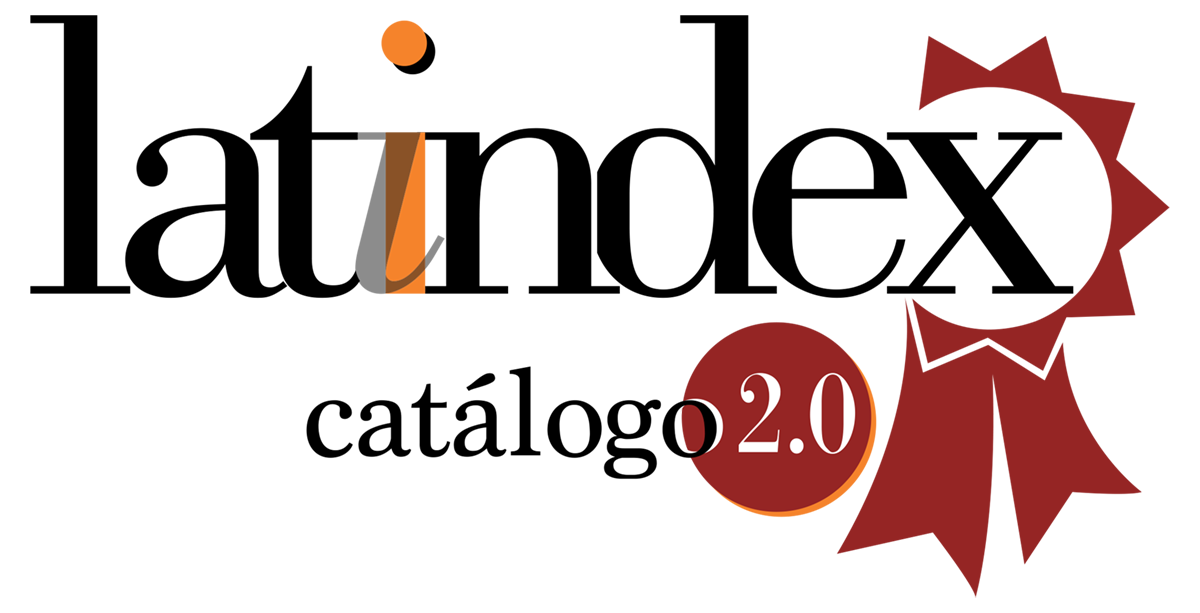Functional evaluation strategies in athletes
DOI:
https://doi.org/10.47133/IEUNA2026Keywords:
functionality in the athlete, athlete, functional scales, functional evaluation, functional test in athleteAbstract
Sports has been associated with the possible appearance of injuries either during workouts or in competitions; but, considering the intensity in high-performance sports, it is more likely that injuries will appear. Considering the above, a sports injury, is the damage caused by physical exercise, to the structure, either of the muscle, bone or soft tissue causing discomfort, feeling of pain and, as a consequence, a decrease of performance to prevent this from happening. It is important to constantly assess and monitor the physical qualities by means of tests or batteries of specific in this case of functional evaluation, which assess the quality of the specific movements of each athlete and the discipline, the re-entry to the sport and, as some authors refer, the prediction of muscle injuries. Objective: to identify the tests or scales currently used for functional evaluation in athletes. Materials and methods: a documentary review of the existing literature in the period 2010-2020 was carried out according to the proposed inclusion and exclusion criteria. Results and conclusions: the results indicate that in the field of functional evaluation of the athlete there is little scientific evidence in certain tests, which is why it is necessary to explore and consider the possibility of creating new assessment batteries specific to each sport discipline, in order to complement the physiotherapist’s functions from aspects of prevention of sports injuries, empowerment and sports rehabilitation.
Downloads
References
Acevedo Mindiola, A. A., & Brian Johan, B. V. (2017). Correlación entre la flexibilidad de la musculatura isquiosural con la altura del salto vertical en jugadores de balonmano selección del departamento norte de santander. ResearchGate, 9(20), 109-120.
Alfonso-Mora, M. L., López Rodríguez, L. M., Rodríguez Velasco, C. F., & Romero Mazuera, J. A. (2017). Reproducibilidad del test Functional Movement Screen en futbolistas aficionados. Revista Andaluza de Medicina del Deporte, 10(2), 74-78. https://doi.org/10.1016/j.ramd.2016.07.001.
Almazán Polo, J., Barrio Calvo, J., Calvo-Lobo, C., Romero Morales, C., Rodríguez Sanz, D., Vázquez González, S., Pérez Chicharro, A., & Cruz Ramos, E. S. (2018). Análisis de la activación isométrica del glúteo medio y la musculatura intrínseca de la planta del pie en la prevención de lesiones en jugadores de baloncesto de élite: Estudio piloto. EJPOD: European Journal of Podiatry = Revista europea de podología, 4(2), 35-44.
Bird, P. A., Oakley, S. P., Shnier, R., & Kirkham, B. W. (2010). Prospective evaluation of magnetic resonance imaging and physical examination findings in patients with greater trochanteric pain syndrome. Arthritis and Rheumatism, 44(9), 2138-2145. https://doi.org/10.1002/1529-0131.
Butowicz, C. M., Ebaugh, D. D., Noehren, B., & Silfies, S. P. (2016). Validation of two clinical measures of core stability. International Journal of Sports Physical Therapy, 11(1), 15-23.
Casamichana, D. (2016). Aplicación de pruebas funcionales para la detección de asimetrías en jugadores de fútbol. Journal of Sport and Health Research, 8(1), 12.
Chisholm, M. D., Birmingham, T. B., Brown, J., Macdermid, J., & Chesworth, B. M. (2012). Reliability and validity of a weight-bearing measure of ankle dorsiflexion range of motion. Physiotherapy Canada. Physiotherapie Canada, 64(4), 347-355. https://doi.org/10.3138/ptc.2011-41.
Clanton, T. O., Matheny, L. M., Jarvis, H. C., & Jeronimus, A. B. (2012). Return to play in athletes following ankle injuries. Sports Health, 4(6), 471-474. https://doi.org/10.1177/1941738112463347.
Cook, G., Burton, L., Hoogenboom, B. J., & Voight, M. (2014). Functional movement screening: the use of fundamental movements as an assessment of function part 2. The International Journal of Sports Physical Therapy, 9(4), 15.
Curtolo, M., Tucci, H. T., Souza, T. P., Gonçalves, G. A., Lucato, A. C., Yi, L. C., (2017). Balance and postural control in basketball players. Fisioterapia Em Movimento, 30(2), 319-328. https://doi.org/10.1590/1980-5918.030.002.ao12.
Félix, H. D. (2016). Evaluación del movimiento funcional del equipo de balencesto sub16 representativo del estado de sonora. EmásF: revista digital de educación física, 38, 119-133.
Fernández-López, J. A., Fernández-Fidalgo, M., Geoffrey, R., Stucki, G., & Cieza, A. (2009). Funcionamiento y discapacidad: La clasificación internacional del funcionamiento (CIF). Revista Española de Salud Pública, 83(6), 775-783.
Gomez-Piqueras, P., Gonzalez-Rubio, J., Sainz de Baranda, P., & Najera, A. (2018). Use of functional performance tests in sports: Evaluation proposal for football players in the rehabilitation phase. Turkish Journal of Physical Medicine and Rehabilitation, 64(2), 148-154. https://doi.org/10.5606/tftrd.2018.1462.
Lisman, P., Nadelen, M., Hildebrand, E., Leppert, K., & de la Motte, S. (2018). Functional movement screen and Y-Balance test scores across levels of American football players. Biology of Sport, 35(3), 253-260. https://doi.org/10.5114/biolsport.2018.77825.
Lisman, P., Nadelen, M., Hildebrand, E., Leppert, K., & de la Motte, S. (2018). Functional movement screen and Y-Balance test scores across levels of American football players. Biology of Sport, 35(3), 253-260. https://doi.org/10.5114/biolsport.2018.77825.
Llurda Almuzara, L., Pérez Bellmunt, A., López de Celis, Aiguadé, R., Casasayas Cos, O., Navarro Uribe, R., Simón, M., Peillón, O. & Ortiz Miguel, S. (2019). Clinical Characteristics in U19 Elite Soccer Players, Implications on Injury Prevention. Journal of Sports Science, 7(1). https://doi.org/10.17265/2332-7839/2019.01.002.
Mancera-Soto, E., Hernández-Álvarez, É., Hernández-Salinas, F., Prieto-Mondragón, L., & Quiroga-Díaz, L. (2013). Efecto de un programa de entrenamiento físico basado en la secuencia de desarrollo sobre el balance postural en futbolistas: Ensayo controlado aleatorizado. Revista de la Facultad de Medicina, 61(4), 339-347.
Marbán, R. M., Vega, D. M., & Rodríguez, E. F. (2011). Validez del test sit-and-reach para la valoración de la extensibilidad isquiosural en triatletas de categoría juvenil. TRANCES. Transmisión del Conocimiento Educativo y de la Salud, 3 (MAY-JUN), 415-434.
Marshall, P. W., & Siegler, J. C. (2014). Lower hamstring extensibility in men compared to women is explained by differences in stretch tolerance. BMC Musculoskeletal Disorders, 15(1), 223. https://doi.org/10.1186/1471-2474-15-223.
Oyarzo Mauricio, C. A., Said Negrete, M. J. y Nazar Araya, M. J.. (2017). Correlación del Single Hop Test con la prueba de Velocidad en treinta metros en infantes entre diez y doce años de un colegio privado de Santiago de Chile. Retos: nuevas tendencias en educación física, deporte y recreación, 32 (2o semestre), 101-105.
Medeiros, D. M., Miranda, L. L. P., Marques, V. B., de Araujo Ribeiro-Alvares, J. B., & Baroni, B. M. (2019). Accuracy of the functional movement screen (fmstm) active straight leg raise test to evaluate hamstring flexibility in soccer players. International Journal of Sports Physical Therapy, 14(6), 877-884.
Otegui, X. M., Tobalina, J. C., López, J. R. F., & Pallarés, J. G. (2012). Validez del test de salto para la valoración del rendimiento anaeróbico y la asimetría en el ciclismo de alto nivel. SPORT TK-Revista EuroAmericana de Ciencias del Deporte, 1(1), 39-45. https://doi.org/10.6018/185541.
Ozunlu, N., Tekeli, H., & Baltaci, G. (2011). Lateral scapular slide test and scapular mobility in volleyball players. Journal of Athletic Training, 46(4), 438-444. https://doi.org/10.4085/1062-6050-46.4.438.
Recio, C. J., Murillo, F. D. B., Valenciano, A. L. & Garcia, F. J. V. (2014). Test de campo para valorar la resistencia de los músculos del tronco. Apunts: Educación física y deportes, 117, 59-68.
Ríos, I. D. P. (2015). Entrenamiento funcional del core: Eje del entrenamiento inteligente. Revista Facultad de Ciencias de la Salud UDES, 2(1), 47-55. https://doi.org/10.20320/rfcsudes.v2i1.247.
Segovia Díaz de León, M. G. & Torres Hernández, E. A. (2011). Funcionalidad del adulto mayor y el cuidado enfermero. Gerokomos, 22(4), 162-166. https://doi.org/10.4321/S1134-928X2011000400003.
Siupsinskas, L., Garbenyte-Apolinskiene, T., Salatkaite, S., Gudas, R. & Trumpickas, V. (2019). Association of pre-season musculoskeletal screening and functional testing with sports injuries in elite female basketball players. Scientific Reports, 9(1), 9286. https://doi.org/10.1038/s41598-019-45773-0.
Tucci, H. T., Martins, J., Sposito, G. de C., Camarini, P. M. F. & de Oliveira, A. S. (2014). Closed Kinetic Chain Upper Extremity Stability test (CKCUES test): A reliability study in persons with and without shoulder impingement syndrome. BMC Musculoskeletal Disorders, 15, 1. https://doi.org/10.1186/1471-2474-15-1.
Vicente-Herrero M. T., Ramírez Iñiguez de la Torre, M. V. I., García L. C., Torres Alberich, I. y Torres Vicente, A.(2019). Lesiones prevalentes en deporte profesional: revisión bibliográfica. Revista de la Asociación Española de Especialistas en Medicina del Trabajo, 28(1), p. 9.
Villaquirán, A. F., Portilla Dorado, E. & Vernaza, P. (2016). Caracterización de la lesión deportiva en atletas caucanos con proyección a Juegos Deportivos Nacionales. Universidad y Salud, 18(3), 541.https://doi.org/10.22267/rus.161803.59.


















